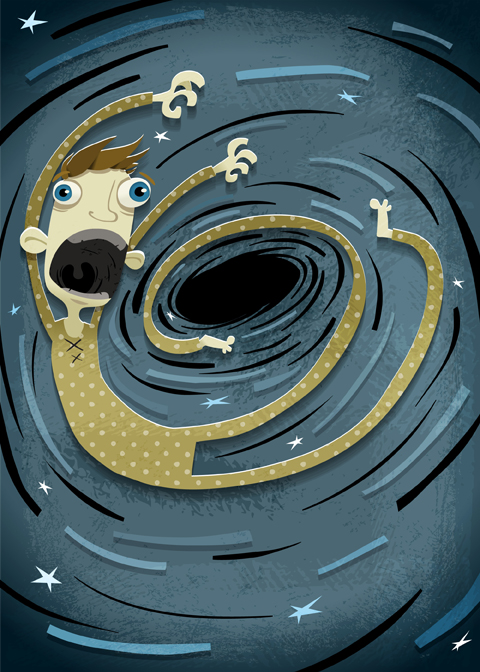Sometime this spring, a gas cloud called G2 will come perilously close to a black hole at the center of the Milky Way.
Dr. Kenneth Hicks, Ohio University Professor of Physics, talks about the “Front-row Seat for a Black-Hole Feeding Frenzy” in his Columbus Dispatch column.
“It is a well-established fact that a super-massive black hole is at the center of our galaxy. The black hole, named Sagittarius A*, is so massive (about 4 million times larger than our sun) that its gravitational field has incredible pull, enough to capture objects that get close to it,” Hicks says.
“If a piece of matter gets too close to the black hole, it first is pulled apart by so-called tidal forces. The ocean tides on Earth occur because of the combined gravitational pull of the moon and sun. The forces are so great that the surface of the ocean gets slightly elongated along the pull.
“Now, imagine being in a gravitational field that is 4 million times stronger than that of the sun. The tidal force is strong enough to stretch things until they pull apart. The technical term is “spaghettification.” It would be a gruesome death for any space traveler who flies too close to a black hole,” writes Hicks.
“Recent observations using infrared light telescopes have shown that a gas cloud called G2 is hurtling toward Sagittarius A*. The two will come closest at the end of March.
“Then, some of the gas will hit a ring of dust that surrounds the black hole, similar to Saturn’s rings. Although this ring of dust has not yet been observed — it’s too far away to see directly — there is good indirect evidence that it’s there.
“If part of G2 does hit this ring of dust, collisions of gas-on-dust will produce an energy outburst ranging from low-energy radio waves up to energetic X-rays, which could be seen by specialized telescopes. This would provide direct evidence of what goes on around a black hole.
“Next, the friction from gas-dust collisions will slow down the gas from G2, which has sped up to about 5 million mph because of the black hole’s gravity. Some of this gas will get swallowed up by the black hole, and some of it will barely escape by being jettisoned at the poles of the black hole.”

















Comments